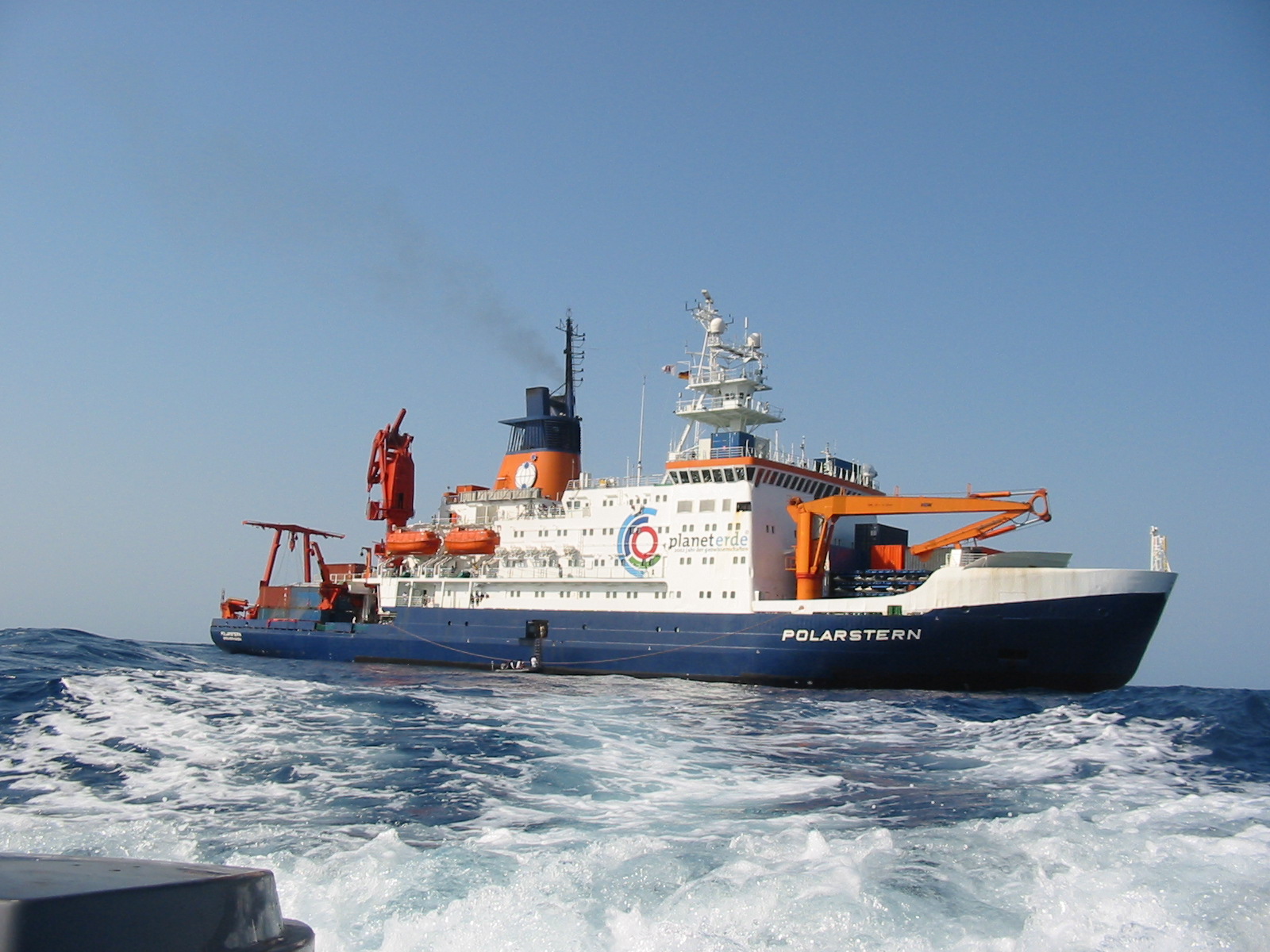POLARSTERN PS88.2
- Area:
- Tropical Atlantic
- Time:
-
02.11.2014 - 29.11.2014
- Institution:
- AWI
- Chief scientist:
- Frank Niessen
The expedition PS88b starts on 03 November 2014 in Las Palmas. The work carried out during this expedition is part of the collaborative research center SFB754 (‘Climate-Biogeochemistry Interactions in the Tropical Ocean’), the BMBF joint projects SACUS and RACE as well as the trilateral (Germany, France, NW Africa) project AWA.
Focus of the SFB754 is the study of the oxygen minimum zones (OMZs) of the eastern tropical North Atlantic (ETNA) and the eastern tropical South Pacific. OMZs are found in all tropical oceans at depths of 100m - 900m, where the ETNA OMZ exhibits minimum oxygen concentrations of about 40 µmol/kg. OMZs arise due to the relatively weak ventilation of the eastern boundaries (shadow zones). The oxygen supply to the ETNA OMZ occurs via different ventilation pathways:
(i) eastward currents transport oxygen-rich water from the well-ventilated western boundary;
(ii) vertical and
(iii) lateral mixing
contribute to an effective oxygen transport across the boundaries (upper and lower as well as northern and southern boundary) toward the core of the OMZ. In general, measurements, carried out since the 1960s, show a negative oxygen trend in the ETNA OMZ. In addition, repeated ship sections and moored observations, carried out along 23°W since 2008 within the framework of the SFB754, suggest that large-scale oxygen variability in the OMZ also occurs on seasonal to interannual time scales.
The general topic of the projects SACUS, RACE and AWA is the tropical Atlantic climate variability, which is strongly related to the variability of sea surface temperature (SST) in the eastern tropical Atlantic. It has been shown that this SST variability impacts rainfall variability in the tropical Atlantic region and particularly influences the strength and the onset of the West African monsoon thereby affecting droughts and epidemics in Westafrica.
The main objective of the expedition is to carry out hydrographic (CTD) and velocity observations (ADCP) along 23°W from 14°N across the equator (minimum until 2°S). In addition, the distribution and abundance of particles, zooplankton and phytoplankton in the water column is measured using an ‘Underwater Vision Profiler 5’ (UVP5), which is attached to the CTD rosette. The UVP data is used to derive a particle-based oxygen consumption rate, which provides an important contribution to the oxygen budget of the OMZ.
Continuous underway measurements are carried out to observe temperature, salinity (thermosalinograph) and chemical parameters (underway-system) of the sea surface as well as velocity (shipbased ADCP, 150 kHz) and hydrography (Underway-CTD) of the upper water column. Additional tests of oxygen sensors with long-term stability (by attaching them to the CTD rosette) are carried out to characterize their performance.
In the framework of AWA, an autonomous glider is deployed in the upwelling region of the eastern tropical North Atlantic (off Mauritania), which will perform hydrographic measurements in the region between Cape Verde and Senegal in the following 3 months. In comparison to the two previous glider missions, which were carried out during the season of strong coastal upwelling (boreal spring), the currently planned glider deployment is aimed at observing the hydrography during the season with weak coastal upwelling (boreal autumn).
Between the glider deployment and the 23°W section, a CTD cast as well as mooring service (replacement of the top element) at the CVOO (Cape Verde Ocean Observatory) site north of Cape Verde are performed.
During the cruise, 6 floats from BSH (PI Birgit Klein) and one float from GEOMAR (PI Henry Bittig) shall be deployed.
On the way to Cape Town the mooring of the AWI (PI Olaf Böbel) is recovered. The overall goal of the mooring is to contribute to the understanding of the South Atlantic breeding locations of primarily blue and fin whales, but also Antarctic minke and sei whales, and to resolve their annual migration between summer and winter ground.
The expedition will end on November 29th in Cape Town.



